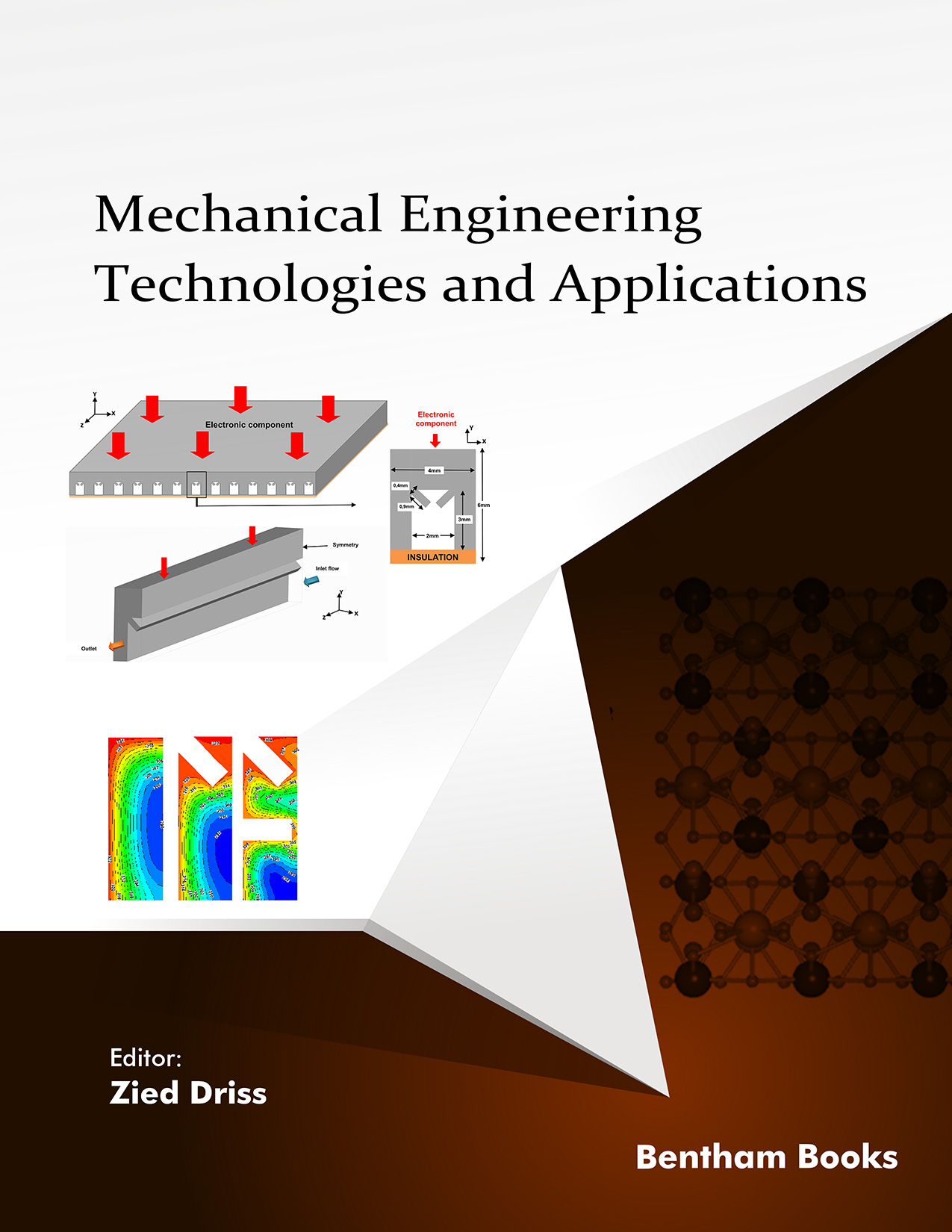This book focuses on the dissemination of information of permanent interest in mechanic applications and engineering technology. The considered applications are widely used in several industrial fields particularly in those of automotive and aerospace aspects. Many features related to Mechanic processes are presented. The presented case studies and development approaches aim to provide the readers, such as engineers and PhD students, with basic and applied studies broadly related to the Mechanic Applications and Engineering Technology.
In the first chapter, a numerical investigation of the turbulent forced convection of a water-Al2O3 nanofluid in slot jets impinging on multiple hot components fixed on the lower wall. The outcomes revealed that the increase in the Reynolds number and volume fraction of nanoparticles with all nanoparticle shapes enhanced the heat transfer rate.
The second chapter examines the experimental application of the gas scavenging membrane distillation (SGMD) process. This process was used to treat complicated solutions with volatile molecules to separate. The SGMD distillation unit has been modeled by mathematical equations and simulated to evaluate the effects of heat transfer and mass transfer.
The third chapter presents the integration of multilayer neural network with an expert system for the automatic choice of the design process of multi-spindle drilling housing. An intelligent design system approach was developed to integrate various phases of the mechanical process including neural network subclasses and MLANN.
The aim of the fourth chapter is to design a new hybrid solar collector based on the superposition of the thermal and electrical functions instead of their overlay as previously done in most existing systems. The main goals are to study the effectiveness of our PV/T prototype in terms of the produced thermal energy.
In the fifth chapter, a thermodynamic cycle simulation of a four-stroke spark-ignition engine was conducted to predict the engine performance. The single-zone model was built based on the Wiebe function for the mass fraction burned and Woschni’s model for the convective heat loss. This study was performed to evaluate the effects of the combustion duration on the engine performance characteristics.
The sixth chapter focus on a Kerosene, Methane and Gasoil flame simulated with detailed chemistry. The mathematical model was based on the enthalpy conservation between two states, and this model was used with the first law of thermodynamics to define enthalpies of reaction and adiabatic flame temperatures at constant pressure.
In the seventh chapter, the laminar natural convection problem for a Newtonian fluid confined between two concentric ellipses was solved numerically. Two cases of heating were assumed, an inner wall at high temperature and an external one at low temperature, then the opposite. The effects of Rayleigh number, aspect ratio in addition to the ellipses orientations were investigated. The dynamic and thermal fields as well as the geometry average Nusselt number calculation were analyzed.
In the eighth chapter, a theoretical Solar Chimney Power Plant (SCPP) model was developed to study the impact of the main design parameters on the SCPP performance. Based on the Manzanares prototype, the proposed model was verified and validated with the experimental data. The thermodynamic characteristics of the SCPP were analyzed by varying the chimney height, the chimney radius and the collector radius.
The nineth chapter aims to develop a geometrical model of a packed column with one cone spray to simulate the injection. CFD simulations using the mixture model coupled with several turbulence models were used to analyze the porosity effect on the fluid profiles. The results confirmed that the decrease of the packed porosity resulted in a greater dispersion of the liquid, indicating the anisotropic behavior in the bed.
In the tenth chapter, the influence of the shape on the characteristics of a Savonius wind rotor was studied in numerical simulations and experimental measurements. Particularly, the features of the Savonius rotor with a new design rotor consisting of a four-stage configuration was studied. The experimental measurements were conducted in an open wind tunnel to validate the numerical model.
Zied Driss
National School of Engineers of Sfax (ENIS)
Laboratory of Electro-Mechanic Systems (LASEM)
University of Sfax
Sfax
Tunisia

